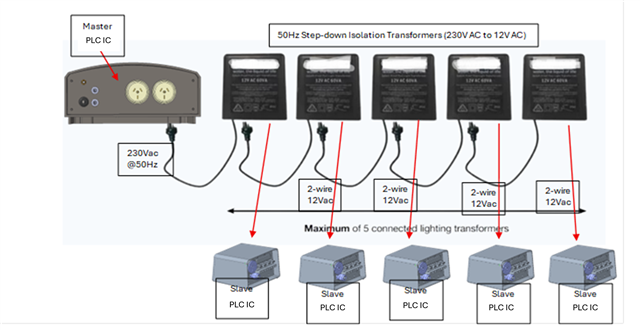Tool/software:
Hi,
I'm interested in learning more about your AFE031 IC and its capability to communicate over single-phase mains power lines (230Vac, 50Hz) within a compact footprint. Specifically, I'm looking for a solution that avoids the use of bulky isolation transformers while still maintaining compliance with standard isolation requirements between the mains and DC side.
Our application is not critical and only requires modest communication speeds, on the order of a few kbps, as we need to transmit small data packets across the existing 2-wire AC power lines. These packets will be used to keep all slave devices on the circuit synchronised.
The master device, which also uses the AFE031 IC, has sufficient space for additional components. However, the slave devices are space-constrained, so the electronics required to interface with the AC power lines (read data, transmit, and maintain isolation) must be as compact as possible, ideally relying on X2-Safety Class Film Non-Polarized capacitors for isolation as these are small.
Could you please provide more details on how the AFE031 IC addresses these requirements?


